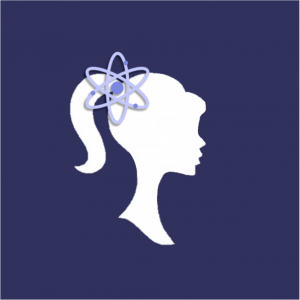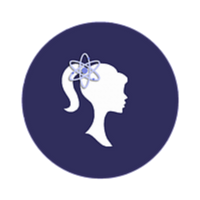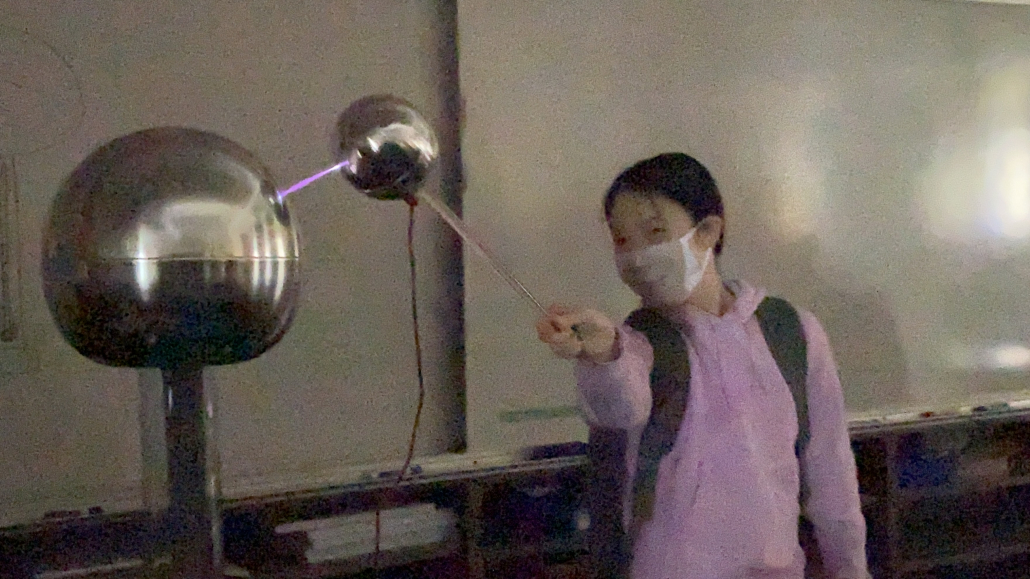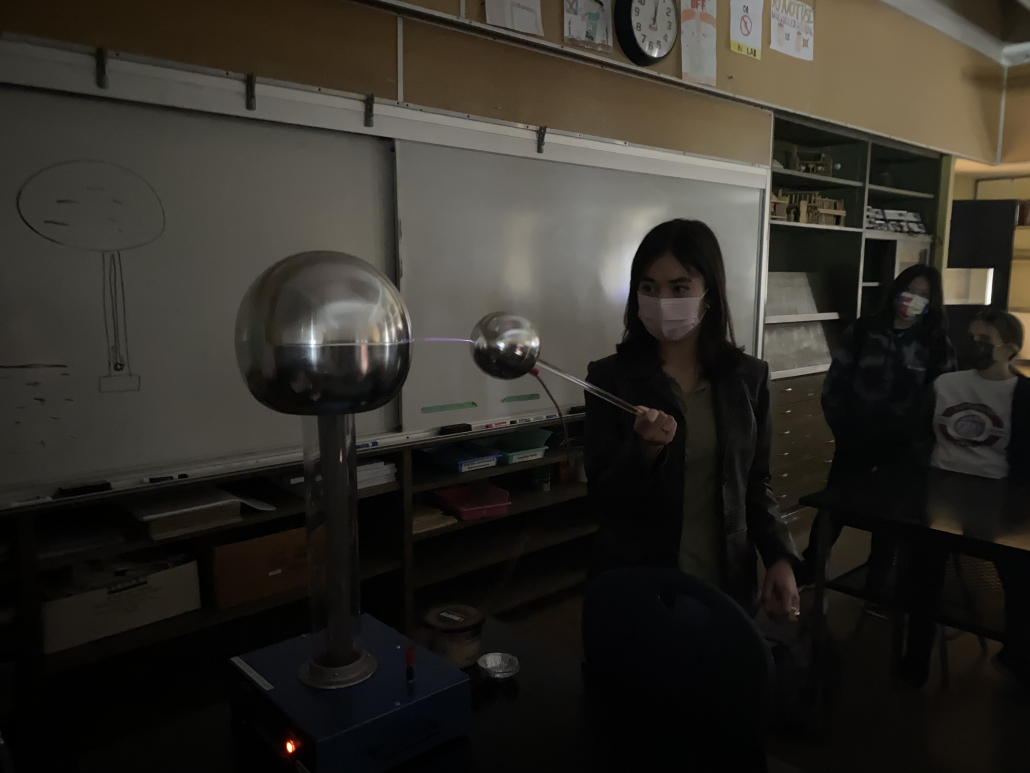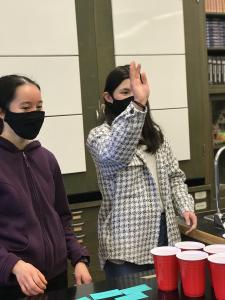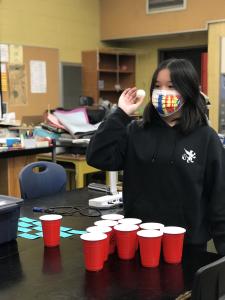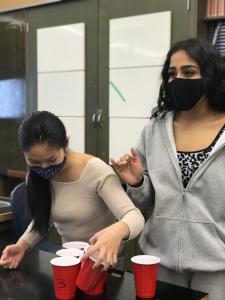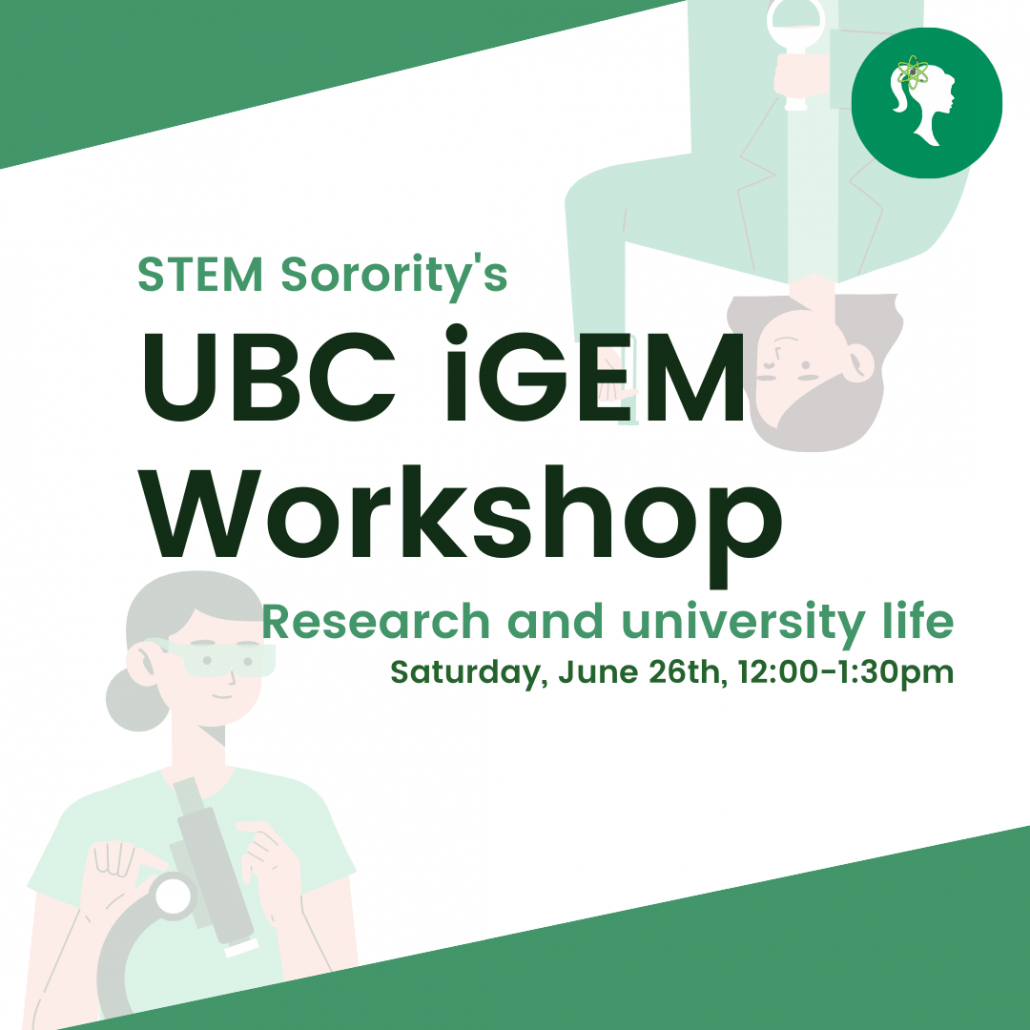
On Saturday, June 26th, we hosted a career workshop for high school students around Vancouver featuring members of the UBC iGEM team. Each year, this group of undergraduates represent UBC at the International Genetically Engineered Machine (iGEM) competition, which includes over 400 teams from around the world. Their goal is to develop new organisms through gene editing to solve modern problems. Aside from preparing for iGEM, the team engages in various outreach programs to introduce students to the field of synthetic biology through hands-on experiences and events. iGEM is based in the Hallam lab at UBC’s Life Sciences Institute, Department of Microbiology and Immunology.
Before the day of the workshop, iGEM members Brenda Ma (3rd year|Hons. Biochemistry and Forensic Science), Janella Schwab (4th year|Hons. Applied Biology), Parneet Sekhon (4th year|Microbiology and Immunology), and Lívia Vieira (4th year|Biology) answered questions sent in by STEM Sorority members about their lives as UBC student researchers through an Instagram takeover.
Our takeover videos included iGEM members giving us advice on how to get into STEM,
their favourite iGEM memory,
Lívia bringing us around on a day in her life as a wet lab member,
and their advice for young women in STEM.
(find even more videos on ethical dilemmas, getting a STEM degree and favourite STEM topics on our youtube!)
To start off the day, our three UBC iGEM speakers — Brenda, Kimia Rostin (2nd year|Computer Science and Microbiology & Immunology), and Parneet — gave a presentation on their team and projects:
Team overview and work timeline: Every summer, the team tackles a modern issue through a synthetic biology approach, spending months developing, designing and building a system using biological parts and molecular biology techniques. Then, they present this project at an International Giant Jamboree in October. The team starts off by recruiting members from October to November. Once assembled, members begin brainstorming their project in January and gradually narrow their focus down to a few ideas. Lots of research is required to establish the project basis and team members consult academic and industry experts at UBC and beyond to solidify their project design. The summer is the most intense period of the year, where members are constantly conducting wet lab experiments, and developing modelling systems for dry lab components. Wrap up time comes at the end of September, and the iGEM team’s hard work is showcased on a global stage at the October competition.
Team structure: iGEM’s large team is crucial to their success. The Executive Director leads the team and directly oversees the Internal and External Directors, who then look over specific sub-teams. Wet lab and dry lab are at the heart of the team, although work conducted in human practices, design, marketing and finance sub-teams also shapes project development. Graduate students advisors essential feedback on member research, and Dr. Steven Hallam, who heads the lab in which iGEM operates, is the main PI for the team.
Current project: iGEM’s current project involves developing a synthetic biology-based platform for cancer immunotherapies. Their goal is to create a bacterial vector and reporter system to determine if a tumour is suitable for immunotherapy. Since individual tumours will cause different immune system responses, it is important to identify tumour profiles to determine which therapies are most suitable for each patient. The project is divided into three stages; developing an in vivo reporter of tumour microenvironment (TME) immunity, continuously monitoring TME during immunotherapy/other treatments, and changing TME to optimize treatment efficiency.
Then, our speakers went on to give a brief overview of the central dogma and current gene editing techniques, such as CRISPR/Cas9.
After the presentation was over, we moved on to the more interactive portion of the workshop. Attendees chose to join 1 of 3 breakout rooms where they would debate a question pertaining to the ethics of science with other attendees and an iGEM speaker:
Room 1 Triage: Who would you approach first at a car accident? A man with spine broken, woman screaming that her child is missing (arm broken), or an unconscious woman?
Room 2 Gene Editing: Can we release genetically modified organisms (GMO) into nature? Should there be laws for this?
Room 3 Stem Cells: Should we use fertilized eggs to extract stem cells, assuming consent from all parties?
As the exciting discussions came to a close, attendees came back to the breakout room and reported their group’s findings.
Room 1 Triage: One attendee with first aid training quickly realized that unconscious woman and the man with spine broken could both survive if cared for immediately, but woman would have a higher chance of survival. We also talked about how they might not have the tools to treat the man with a broken spine until they got to the hospital. Everyone also agreed that they would talk to the woman with the missing child who is likely in shock, while treating the unconscious woman. We also considered the possibility that the woman may not actually have a missing child and her panic could be induced by some other injury.
Room 2 Gene Editing: This group came to the conclusion that there should be strict legislation around releasing GMO into nature, due to the negative impacts it could have on surrounding ecosystems. More studies should be done on how GMO crops may affect pollinators and animals that ingest them. We also considered the widespread positive impact of GMO crops in solving rampant food shortages around the world, and that certain crops are being engineered to prevent fungal infections which can cause various harmful responses in humans, coming to the agreement that gene editing use on crops should still be allowed.
Room 3 Stem Cells: This group decided that if the parents consent, they would allow the extraction of stem cells from un-implanted embryos (resulting from in vitro fertilization) due to the immense positive impact it would have on the lives of others. We agreed that if this were legalized, it would definitely cause lots of backlash, especially pro-life communities. We also acknowledged the danger that people could be pressured into giving up their un-implanted embryos and highlighted the importance of detailed legislation to prevent this from occurring.
The event concluded with a Q&A period where members answered questions that attendees submitted over a short break. iGEM member Emilia Chen (4th year|Computer Science and Microbiology & Immunology) also paid us a visit! Our iGEM speakers talked about life at UBC, internships, and gave advice on what it’s like to be women in STEM. Some highlights include speakers sharing their favourite locations in UBC, ranting about their hardest classes, sharing resources/organization at UBC for women in STEM, and encouraging us high school listeners to reach out to local labs and get involved in scientific projects.
Overall, this event was an amazing educational experience where attendees got to explore current gene editing projects with UBC iGEM researchers, delve into interesting ethical topics, and gain valuable advice on a future path in STEM.
STEM Sorority members were put into teams of 3-4 and challenged to create the safest egg drop structure they could with the following supplies:
- Rubber bands
- Popsicle sticks
- Marshmallows
- Straws
- Glue guns and sticks
- Balloons
Members came up with a variety of exciting structures; some constructed a popsicle stick cage stacked with marshmallows, wrapped the ball tightly in rubber bands, or created a balloon parachute for their egg. After two full days of work, all egg drop structures were placed in brown paper bags and dropped from 3 stories high. Here is a video of the results along with fitting music to commemorate the cracking of so many eggs:
Despite the many unfortunate egg deaths, this activity was a great way to showcase the creativity of STEM Sorority members and their athletic abilities as we raced around the school trying to find a classroom high enough to drop the eggs.
For the final event of the year, STEM Sorority members participated in a hair-raising Van de Graaff generator demo. With safety in mind, members were given a crash course in electricity and charge as well as how a Van de Graaff generator works before the commencement of the event.
The first demonstration involved a dazzling lightning show. The dome was allowed to charge for some time then grounded in milliseconds using a grounding rod held several centimetres away from it. With the lights off, members could see a stream of electrons travelling between the rod and the dome, creating a blue fluorescent glow.
Then, members were given the chance to let their bodies interact with the Van de Graaff generator. One by one, they stood on an insulating styrofoam block and let the generator charge them, their hair slowly rising up and forming a frizzy mess. Members watched in awe as they saw properties of like and opposite charges in action. They questioned whether or not the same thing would happen when two members, both on insulating blocks and one touching the Van de Graaff generator, held hands. Sure enough, both members could feel the charges rush into them as their hair rose up. After slowly getting grounded with a wooden meter stick, the members commented on how they had formed electrifying bonds of friendship through the activity.
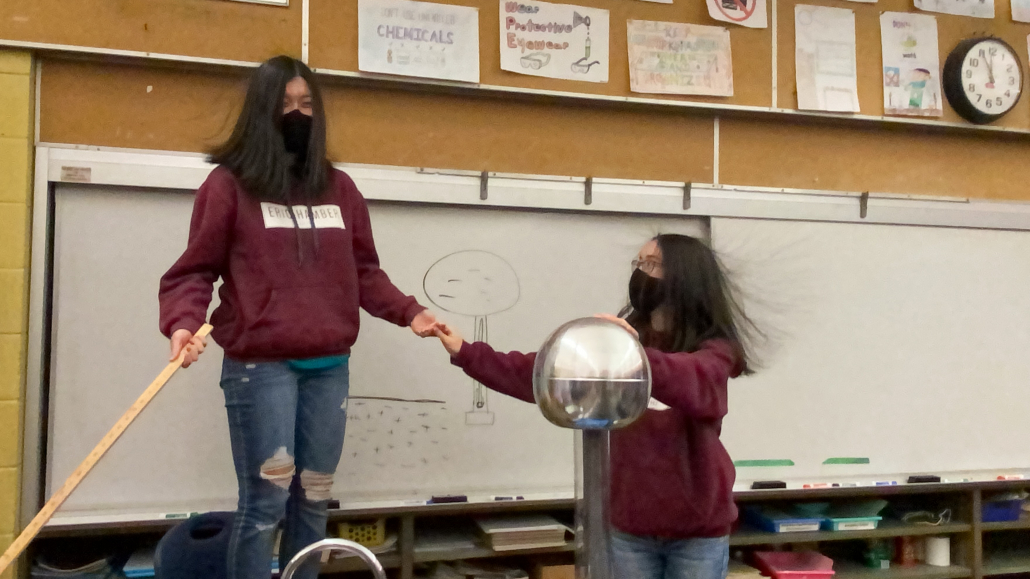
As the hosts moved on to the bubbles demonstration, they realized that there was an issue with the bubble blaster! Jenny frantically looked for a way to fix the blaster while Judy continued on with the next activity.
To further observe the properties of like and opposite charges, a rice krispies demonstration was prepared. A small plastic container full of rice krispies was placed on the charging Van de Graaff generator. After a short period of time, the rice krispies flew out of the container like fireworks due to how light they are and their sensitivity to such little force. Judy also ended up spilling the entire rice krispies container. Ms. Chan sighed as she saw the mess being made in the classroom.
As members cleaned up the classroom, Jenny returned with a working bubble blaster. Out of breath, she explained how separation of charge works and why neutral things are attracted to charged things. In the dying minutes of lunchtime, members watched the final demonstration of the meeting involving bubbles rebounding off the Van de Graaff generator.
Overall, this activity helped members find their spark in school again, both figuratively and literally!
After comments of “STEM Sorority is a sorority— we should do sorority things!”, brainstorming was done and an activity was planned for Friday, Feb 26, Science Pong.
Science Pong is a variation on the quintessential sorority party activity, beer pong. To set up for it, we pushed Ms. Chan’s tables (with horrible screeching sounds) into medium-length rectangles, where we set up nine cups arranged into a triangle at each end.
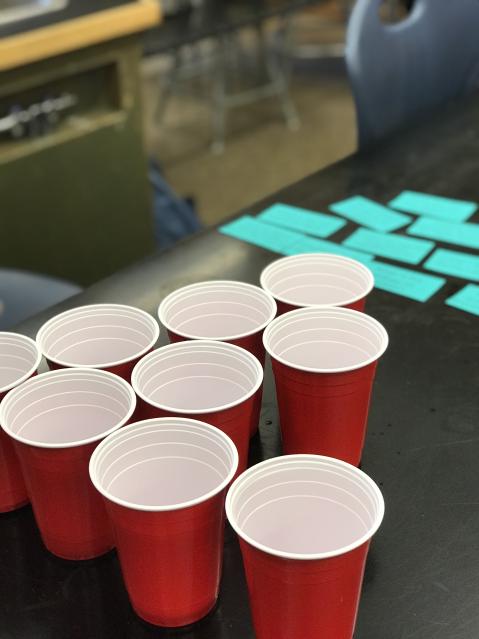
The basic principles of Science Pong were similar to beer pong: toss a ball into numbered cups at the opposite end of the table. At this point, you would answer the science trivia on the corresponding flash card.
The trivia varied in difficulty, from naming the organelle for cellular respiration (mitochondria!) to balancing a chemical equation, or solving a trinomial. If you didn’t know what it was, then a vague hint was given, or the cup was replaced.
Near the end, a game of Mega Pong commenced. Under the mildly disapproving glances of Ms Chan and the judgemental glares of glassware in the cabinets, ping pong balls were flung across the room. After a series of misses, projectile motion was brought up. The general consensus was that, while calculable, it would be too difficult to perfectly align the throw.
“There was a lot of good energy, and everyone participated,” commented Alanna R., a member of the club. “I’m biased, because I won my round, but I thought it was super fun.”
Indeed, the vibe of the day was pleasantly excited, chaotic but controllable, and the general mood indicated that this too was a roaring success.
Click here to see our career highlights video and the full recordings of each of our breakout rooms!
On Feb. 12, STEM Sorority hosted our first event, a career workshop featuring 3 prominent women in STEM from healthcare and biotech sectors. With around 80 girls from schools all across Vancouver attending, the event was a great success and many girls stated that they gained valuable knowledge about how to meet their future career goals. The event started with short introductions from each of the speakers in front of all the attendees. Then, attendees were split into breakout rooms with their desired speaker to listen to a 10 minute presentation and then participate in a 10 minute Q&A session.
In Breakout Room 1 was Dr. Laura Arbour, a clinical geneticist and researcher of Indigenous genetic diseases. In Dr. Arbour’s workshop, she introduced Long QT syndrome to us, a research topic she has been involved in for many years. This syndrome, although rare, is a genetic mutation mostly found in Indigenous Peoples which disrupts the heart rhythm, possibly leading to sudden seizures or even death. She explained that the syndrome can be easily treated with a beta blocker, so it is crucial to offer Indigenous People accessible genetic testing. Dr. Arbour has also worked to set up inherited arrhythmia clinics in Northern BC and emphasized the importance of working with local Indigenous Peoples of the area, such as educating their community about genetic diseases. Her goal is to bridge the genetic divide, providing for those in less supported and acknowledge regions. Lastly, she gave us some tips about how to pursue a career as a researcher and work on a team like hers, such as always being curious and proactive.
In Breakout Room 2 was Ms. Norma Biln. During STEM Sorority’s speaker day, Norma Biln talked a bit about her company, Augurex, but also about her experiences getting to where she is now. We learned about the biomarkers Augurex makes that help diagnose rheumatoid arthritis at an earlier stage. She also talked about how it’s important to focus on what you want to do, and not what stops from doing it, and how it’s helpful to take steps to volunteer/work to get experience in the field of study you want to pursue. Even while presently working and managing her own company, she believes in continuing education, and is currently halfway through a PhD degree.
In Breakout Room 3 was Dr. Alissa Wright, head of Infectious Diseases at Vancouver General Hospital. For her presentation, she talked about her her career path and the education needed to achieve her esteemed position as a woman in STEM. Surprisingly Dr. Wright knew she was interested in medicine ever since she was young despite not having many influences pushing her towards a career path in medicine. It was fascinating to hear about the turning points which helped Alissa Wright determine what fields she was interested during numerous years of education and finally reaching the important positions, such as department head of the Infectious Diseases and running the Transplant Department at Vancouver General Hospital. In the Q & A portion, Dr. Wright gave many enlightening and well thought out responses to our questions and provided valuable career advice.
Check out this together mode screenshot from our workshop below 🙂
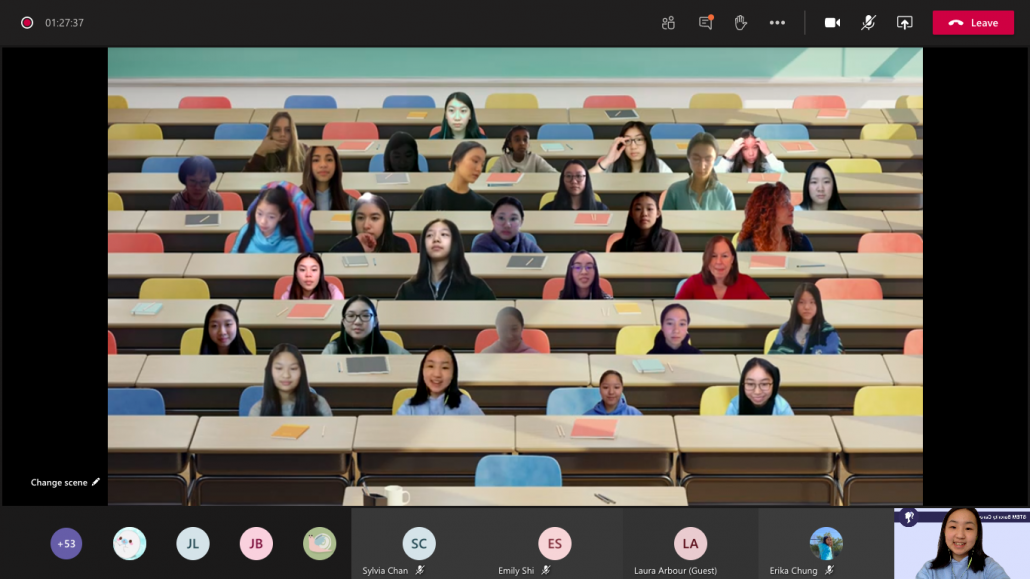
STEM Sorority’s first activity was a spaghetti tower building challenge that helped members get to know each other better while also practicing their engineering and creativity skills. Members worked in groups of two or three using nothing but raw spaghetti and masking tape to create a carbohydrate skyscraper. The towers had to hold a 100 gram mass above 30 cm while surviving an “earthquake” simulated by a shake table. The team that used the least amount of spaghetti won. Here are some photos of members hard at work on their towers:
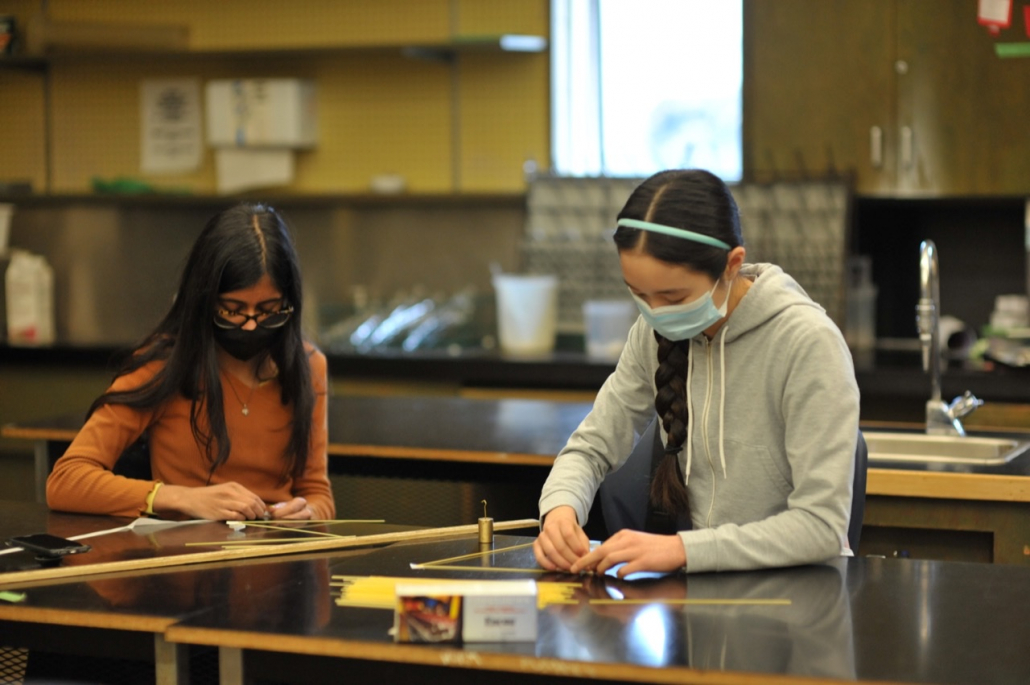
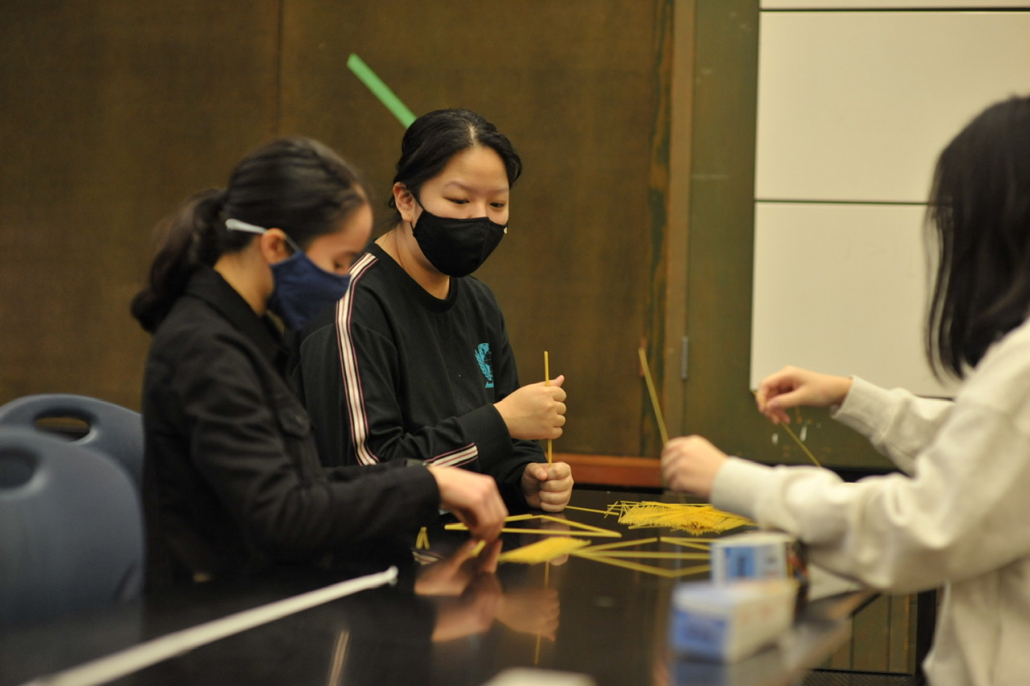
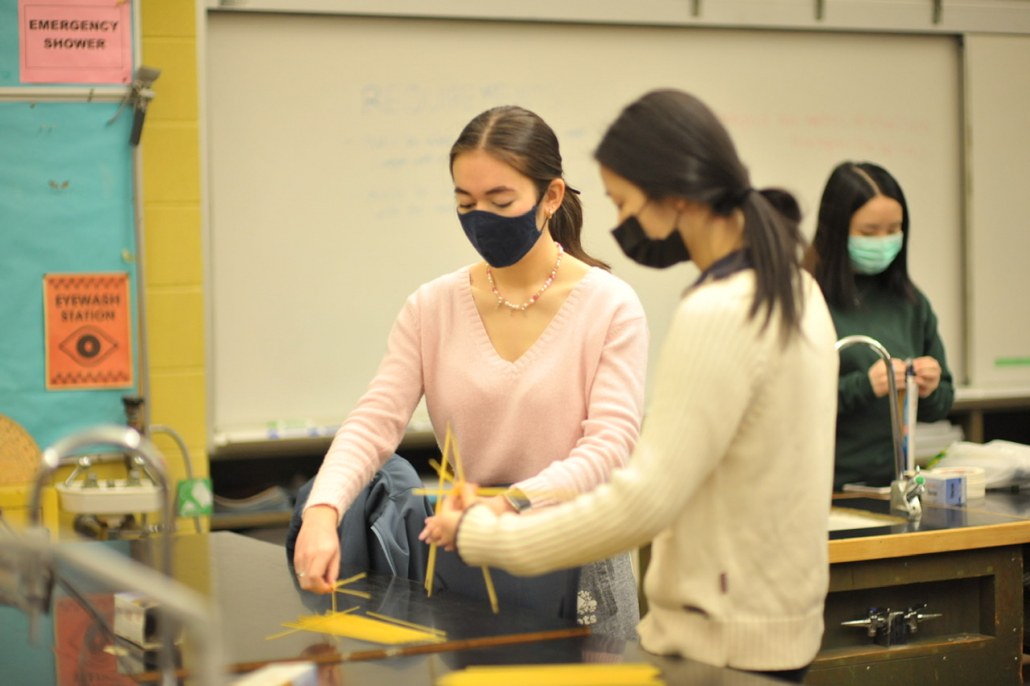
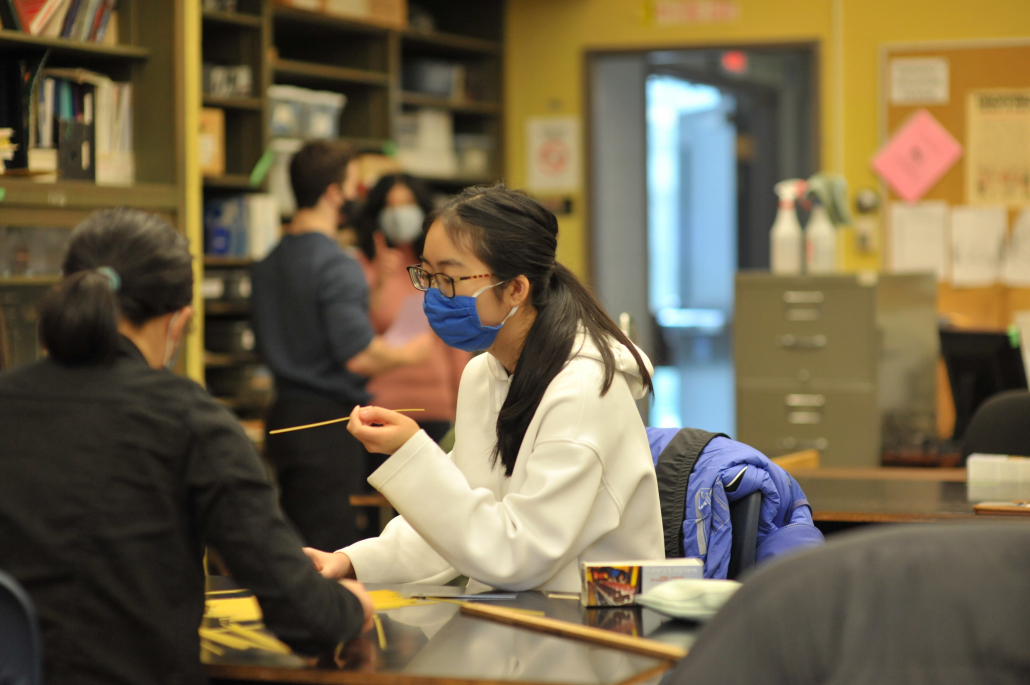
After two meetings during Flex times on Jan 15 and 22 spent constructing, it was time for each group to test their towers. Each structure was unique and different in its own way. Some were thick and solid looking, while other teams chose to have lighter, skinnier frames. Some towers started collapsing under their own weight and didn’t even make it to the shake table testing.
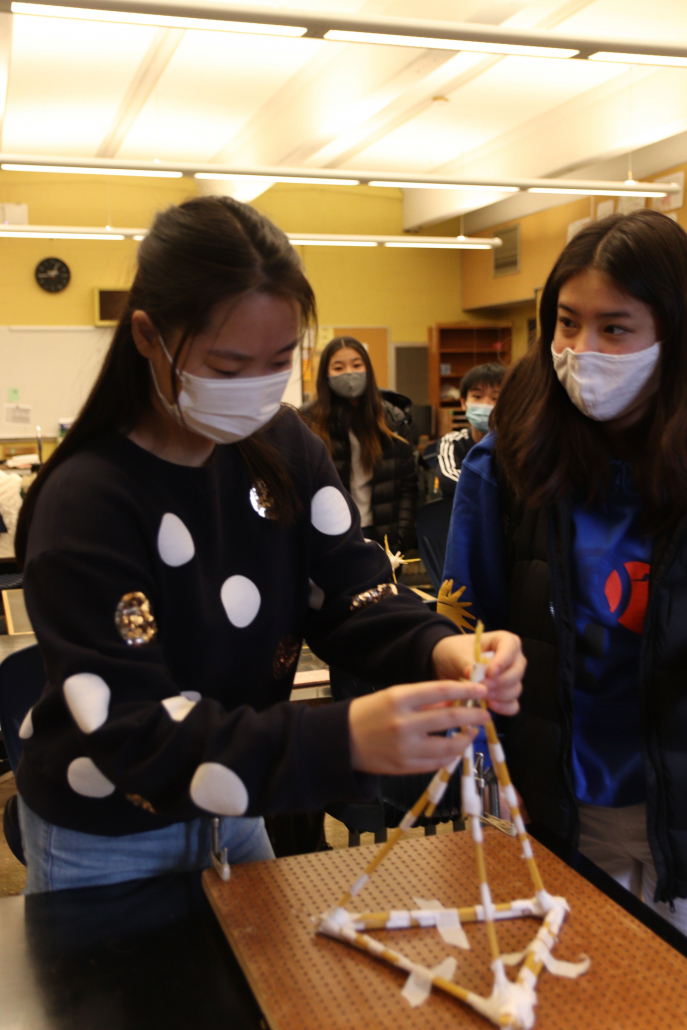
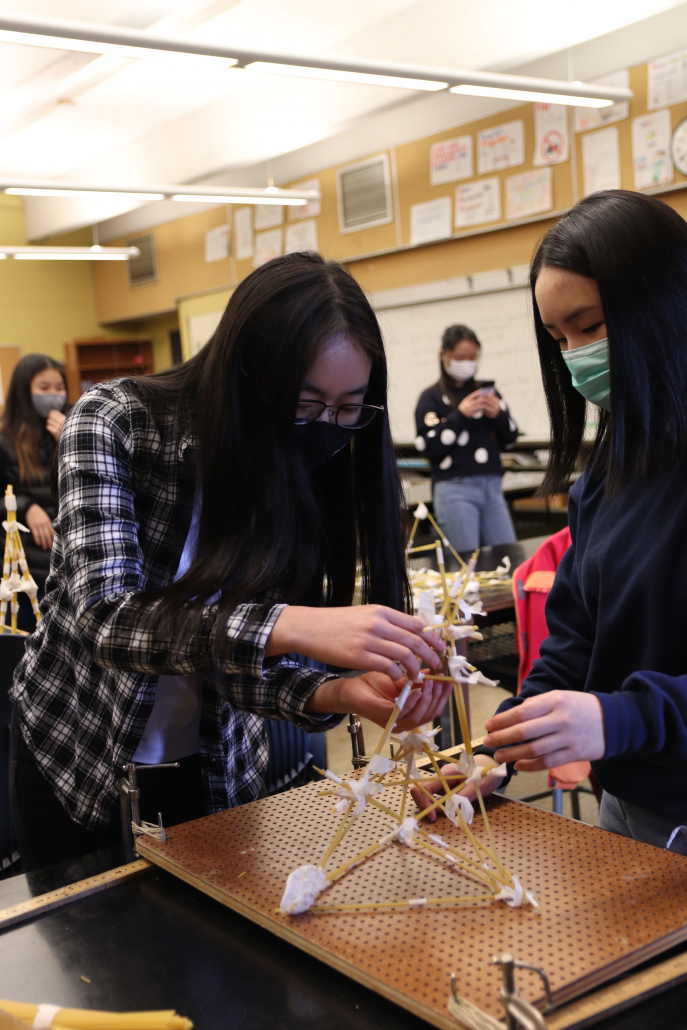
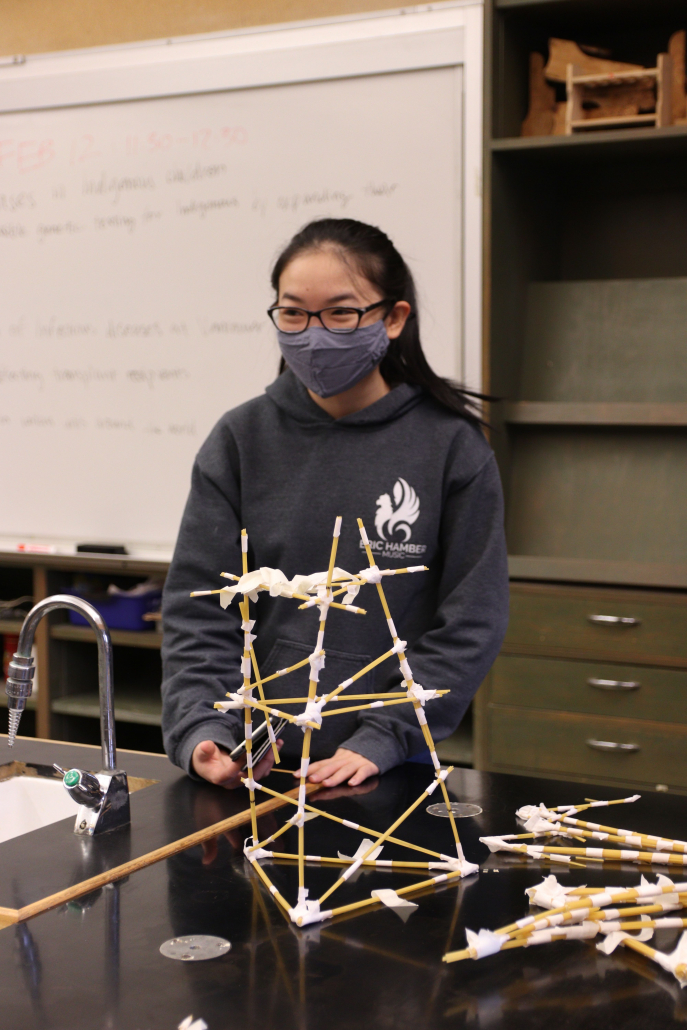
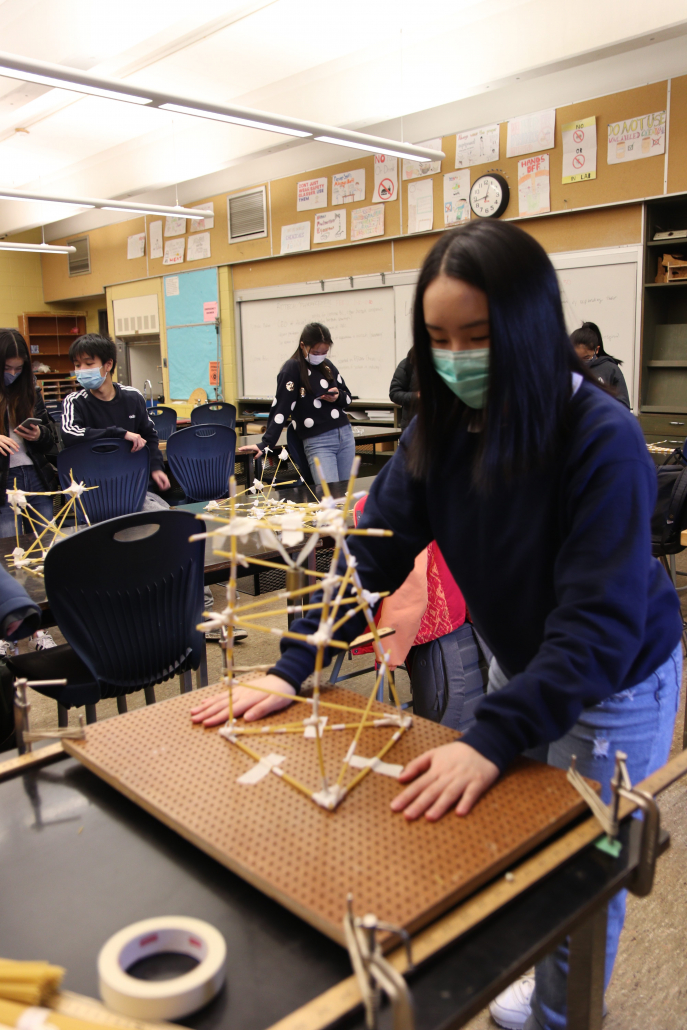
To see which spaghetti tower was the strongest, the shake table was stretched to incrementally longer distances (5cm, 10cm, 15cm); the longer the distance, the more aggressive the shaking. The shake table was stretched more and more until the last tower had fallen. Here is a before and after of one of the towers:
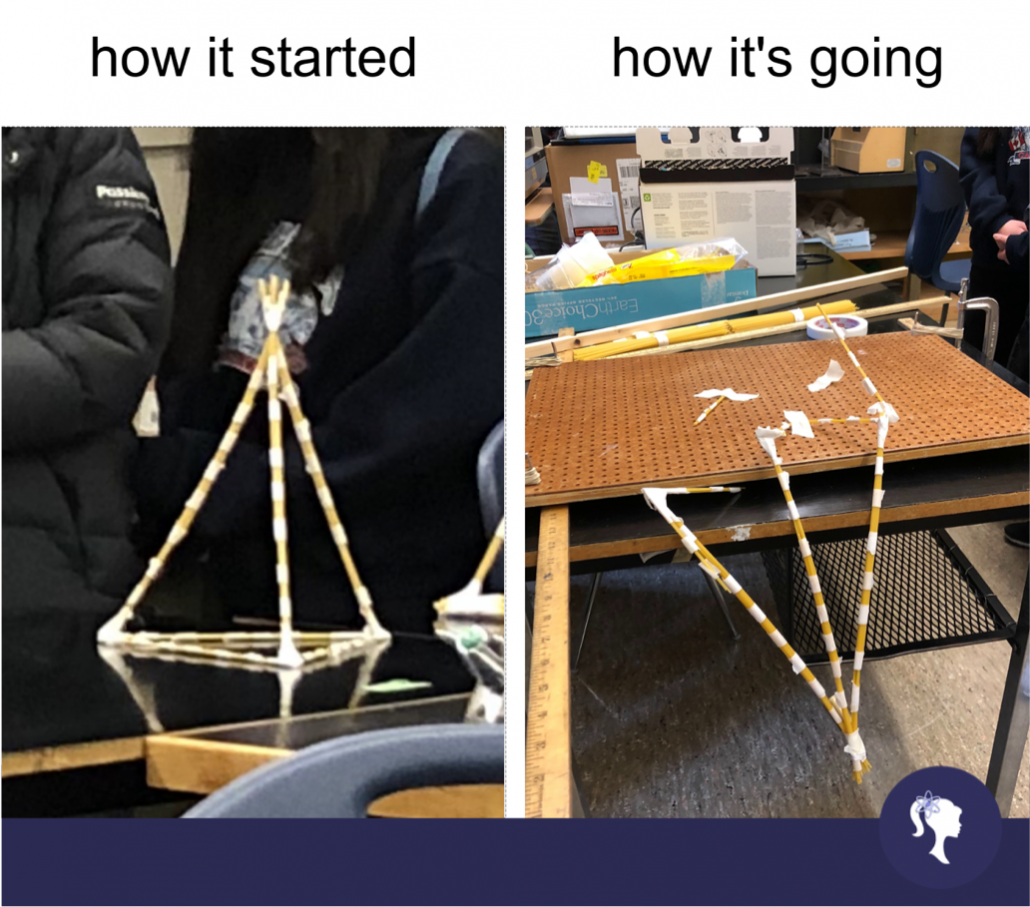
Congratulations to Katya, Julia, Alanna, Jacqueline and Anika for having the sturdiest tower!!
